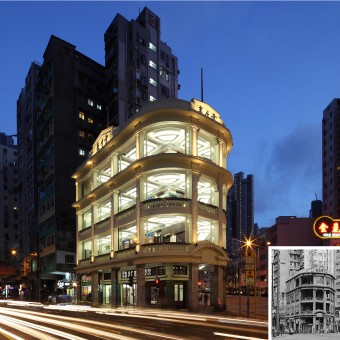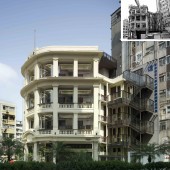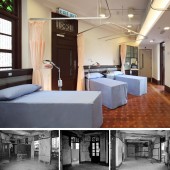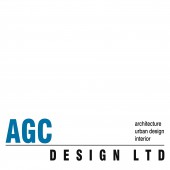Revitalization of Lui Seng Chun Heritage Conversation by Lam Chung Wai, Tony |
Home > Winners > #35379 |
 |
|
||||
| DESIGN DETAILS | |||||
| DESIGN NAME: Revitalization of Lui Seng Chun PRIMARY FUNCTION: Heritage Conversation INSPIRATION: The philosophy of conserving Lui Seng Chun was arrived, firstly by inspiration of the concept of “preserving cultural significance” emphasized in the Burra Charter - Australia ICOMOS; and secondly, by the thought evolved from the cultural significance of the building. The project aims to preserve the tangible historical and architectural value of Lui Seng Chun in its physical fabric, and celebrate and sustain the intangible significance of the building to socio-economical life of the neighbourhood as a living heritage. The complexity and integrity of the site of Lui Seng Chun would be well kept to enhance its value to the community. While putting the philosophy into practice, we intended to apply the international charters and standards in the conservation works, from the broadest cultural aspect to the smallest construction detail. In order to maintain “authenticity” of heritage as referred in the Venice Charter, any later addition to Lui Seng Chun has been controlled under the following principles: - Retain authenticity and integrity - Minimum intervention - Maximum reversibility - Technically feasible and complying regulations - Enhance heritage value UNIQUE PROPERTIES / PROJECT DESCRIPTION: Lui Seng Chun was constructed in 1931 by an English Architect Mr. W. H. Bourne. A tong-lau (local term for Hong Kong shop-house typology) which G/F was occupied by a Chinese bone-setting medicine shop named "Lui Seng Chun ", while the upper floors became living quarters for the members of the Lui's family. In 2009, the Baptist University of Hong Kong was selected to conserve and convert this Grade I heritage building in the "Revitalising Historic Buildings through Partnership Scheme" initiated by the Government. With the uniqueness of the building itself, the new use of Lui Seng Chun was selected to match with its historical and social identity. Original building fabrics and its distinct architectural features are intact with a high degree of authenticity and integrity. Re-open to public in 2012, Lui Seng Chun was conserved and adapted as a Chinese medicine & healthcare centre operated by the School of Chinese Medicine, Baptist University of Hong Kong. Fitting with modern building facilities, it provides affordable Chinese medical treatment including bone setting, acupuncture and traditional Chinese herbal tea to the locals especially the less-privileged, on-job training for medical students and continuous education of local practitioners. Exhibitions on herbal tea, Chinese medicine and history of local “tong lau” were also provided for the general public. Since the deep verandah of the existing building occupies more than half of the typical floor plate, the architect had enclosed the verandah by super clear glass with structural frame carefully designed behind the existing columns to avoid segmented appearance while providing additional space for exhibition & medical functions and hence preserved the external façade to a high authenticity. New additions were deliberately located to the less significant face of the building, additions including lift, steel staircase set back from the prominent corner of the building. New steel staircase integrates structure and screen wall inspired by the geometric pattern from the fenestration. Interior decoration is kept minimum and humble where original ceiling moldings were all maintained and expressed as far as the building services allow. The Revitalisation of Lui Seng Chun preserves the intangible cultural significance of the Chinese medicine heritage and continues the legacy of Lui Seng Chun bone setting and herbal medicine established 80 years ago. It also rejuvenates the aging local community as a tourist attraction as a land mark medical service and successful case of adaptive re-use. OPERATION / FLOW / INTERACTION: This conservation project coincide with one of the missions of HKBU – community service to society. Besides, the then service nature of selling bone-setting medicated wine accords with the University’s commitment to promoting Chinese medicine. Carefully calibrating these objectives, HKBU applied with success to revitalise Lui Seng Chun into a multi-functional Chinese medicine clinic. The preserved building now represents not just a clinic but also a cultural landmark that embodies Chinese medicine and Chinese heritage, a platform for fostering exchanges among local Chinese medicine practitioners, a conservation venue that calls for public’s participation, and a unique tourist attraction. PROJECT DURATION AND LOCATION: January 2010 (Design) to 1 March 2012 (Completion) Location: 119 Lai Chi Kok Road, Mongkok, Kowloon |
PRODUCTION / REALIZATION TECHNOLOGY: - SPECIFICATIONS / TECHNICAL PROPERTIES: - TAGS: Revitalization, Heritage, Conserve, Medicial, clinic, exhibition RESEARCH ABSTRACT: Throughout the whole project, from research to construction, these charters and standards provide guidelines to the conservation works, based on which the conservation objectives adopted for the adaptive reuse of Lui Seng Chun are as follows: - Preserve the authenticity and integrity existing building fabrics of Lui Seng Chun for long term protection to the building from further deterioration by effective management plan - Adaptive reuse Lui Seng Chun for a new compatible uses as a Chinese Medicine and Healthcare Centre and revitalise it as a living heritage which is technically feasible and complying current building regulations - Enhance the cultural heritage of Lui Seng Chun by interpretation of its heritage value for public appreciation of the cultural significance of the heritage - Promote public awareness and education in heritage conservation, and bring social benefits to the local communities - As a model conservation project to demonstrate how a nonprofit organisation is capable of operating a successful social enterprise for a self-sustainable heritage project Extensive research has been made on the historical background to sort out the original design and interventions the building underwent via desktop study as well as interviews to the family members lived there e.g. the enclosure to verandah noted in photo records was not original design which was added to increase the living space; Studies to shop-house typology in Hong Kong helped out to identify architectural genre and further formulated the uniqueness of Lui Seng Chun comparing to its pre-war counterparts – it was architect-designed to order with clever response in the deep verandah to the urban setting at a junction site, the early reinforced concrete technology etc. The result of research works provided the detail information of the site and defines Character Defining Elements. It is a crucial step before design work to preserve the historic elements as much as possible to express cultural significance via up keeping of architectural value. Relevant structural investigation, ground investigation and loading test were carried out to have a complete and accurate understanding of the physical condition. Testing to concrete components and its aging condition, together with reinforcement structural strength helped structural engineer to determine the loading capacity of the existing structure against new use. Ground investigation revealed the adverse soil condition and the location of existing footing of the building thus provide design parameter of locating the new disable lift inside the building to avoid the existing footing and designing of piling system of the new staircase. In terms of documentation, a Heritage Impact Assessment of the revitalization of Lui Seng Chun was submitted to the Antiquities and Monuments Office (AMO) under Leisure and Cultural Services Department for approval. A detail record of the building by a set of cartographic and photographic survey was conducted for record before the construction works. This include detail record of each elements inside the building such as doors with motifs, windows, cabinets, mouldings, tiles, etc. CHALLENGE: The biggest challenge to the revitalisation of Lui Seng Chun was to overcome the limitations posed by the building itself. The key interventions came from the need to work in compliance with the city’s current building codes for public health and safety, and to address the operational needs of a Chinese medicine clinic. Consequently, the revitalisation work involved the addition of a new staircase as a fire escape route, a lift and toilets that cater for people with disabilities, the restoration and reinforcement of existing structures and elements, addition of clear non-reflective glass enclosures along the verandahs, installation of drainage, fire safety, electrical and air-conditioning facilities, etc. During the process, much consideration went into the choice of materials and replacement of facilities. After the conservation works, the new elements and facilities integrate harmoniously with the existing ones, while the original appearance and architectural elements of the building have been largely preserved. ADDED DATE: 2014-06-23 03:49:11 TEAM MEMBERS (10) : Design Team, Heritage Consultant and Architect: AGC Design Ltd, Schemetic Designer: Wang Weijen Architecture, M & E Consultant: Richmond Consulting Engineers, Structural Engineer: Greg Wong & Associates Ltd., Quantity Surveyor: TLS & Associates Ltd., Landscape Consultant: Kenneth Ng & Associates Ltd., Fire Engineer: Parsons Brinckerhoff (Asia) Ltd., Environmental Engineer: BMT Asia Pacific Ltd., Planning Consultant: PlanArch Consultants Ltd. and Main Contractor: New City Construction Ltd IMAGE CREDITS: Image #1: (Colour)Hong Kong Cultural Imaging Workshop, 2012. (B&W) Antiquities and Monuments office, 2000-2004. Image #2: (Colour)Hong Kong Cultural Imaging Workshop, 2012. (B&W) Antiquities and Monuments office, 2000-2004. Image #3: (Colour)Hong Kong Cultural Imaging Workshop, 2012. (B&W) Antiquities and Monuments office, 2000-2004. Image #4: (Top)Hong Kong Cultural Imaging Workshop, 2012. (Bottom Left) Erica Chui, AGC Design Ltd, 2012. (Bottom Centre) Hong Kong Cultural Imaging Workshop, 2012. (Bottom Right) Erica Chui, AGC Design Ltd, 2012. |
||||
| Visit the following page to learn more: http://scm.hkbu.edu.hk/lsc/en/index.html | |||||
| AWARD DETAILS | |
 |
Revitalization of Lui Seng Chun Heritage Conversation by Lam Chung Wai, Tony is Winner in Cultural Heritage and Culture Industry Design Category, 2014 - 2015.· Read the interview with designer Lam Chung Wai, Tony for design Revitalization of Lui Seng Chun here.· Press Members: Login or Register to request an exclusive interview with Lam Chung Wai, Tony. · Click here to register inorder to view the profile and other works by Lam Chung Wai, Tony. |
| SOCIAL |
| + Add to Likes / Favorites | Send to My Email | Comment | Testimonials | View Press-Release | Press Kit |
Did you like Lam Chung Wai, Tony's Cultural Heritage Design?
You will most likely enjoy other award winning cultural heritage design as well.
Click here to view more Award Winning Cultural Heritage Design.








